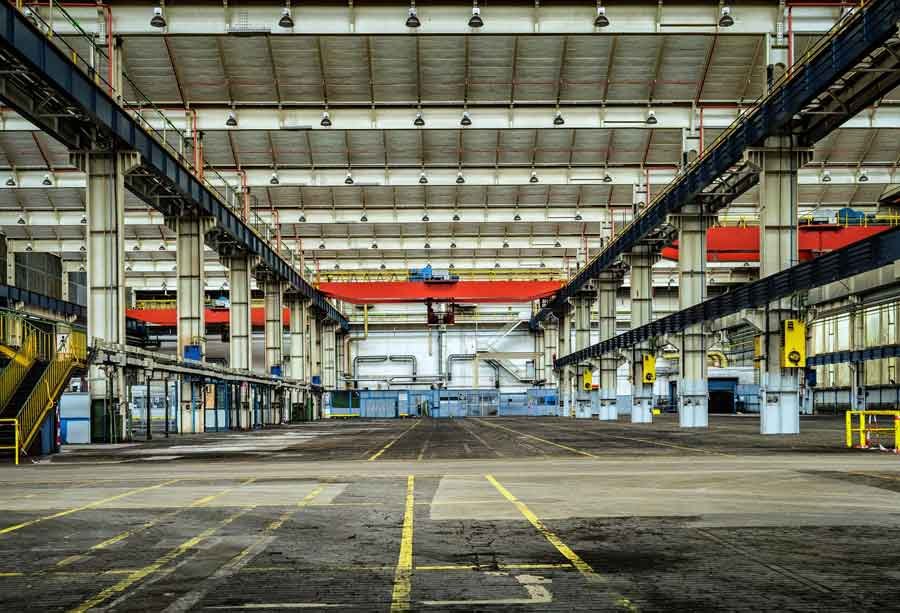The very essence of an e-commerce business is the avoidance of brick-and-mortar stores that are huge money-guzzlers. However, the items you sell online need to exist physically and be stored someplace before they are shipped to customers.
For this reason, you need to have a great e-commerce warehouse. Some entrepreneurs rent space in a local warehouse, while others turn their garage into a warehouse. Whatever, the case, here are 7 steps to set up a great e-commerce warehouse.
What processes fall under e-commerce warehouse management?

Running the warehouse on a daily basis implies training and perhaps hiring warehouse staff, as well as managing inventory and taking care of safety. You will need to accurately forecast shipping volume, obtain the necessary licenses, and cooperate with shipping carriers and courier services. If you feel uncomfortable doing any of the listed chores on your own, then consider hiring a manager to execute them for you. All these tasks are very important for the success of any eCommerce business. If you want to understand What is e-commerce order fulfilment, know that these tasks form an integral part of the process.
Don’t pile up goods
One of the most basic principles in any warehouse serving the needs of an e-commerce business is to avoid stockpiling. Sure, customers should click products that physically exist in your warehouse but this doesn’t mean that you should have 200 copies of each item.
Use the sales figure to help you determine what sells the most and only store extra copies of this merchandise. Stockpiling goods, in general, is not a good idea, as you lose valuable storage space; essential when it comes to expanding your online business.
Faster shipments
The same-day deliveries of today are made possible due to carefully positioned logistics centres and warehouses. In this sense, the location of your warehouse is largely going to determine how fast a customer receives the product they ordered online.
Furthermore, the warehouse’s location will have an impact on your operating costs as well, since long hauls decrease your profit margin. Ideally, you should develop a nationwide network of warehouses so items can be shipped quicker. Of course, you are still going to need a hub for your operation, while you would rent the rest of the storage space.
Technical details
We have already discussed the importance of the physical location of your warehouse. However, you need to take notice of a couple of technical details inside the warehouse itself. For example, the shelving should run all the way to the ceiling or to an extended louvred roof popular with exterior storage spaces.
Needless to say, if you are going to have shelves extend all the way to the roof, then make sure they are well-secured so as to avoid accidents. Furthermore, try to arrange the products on shelves in an effective manner. The items that are taken down less often will go on top shelves, while items sold on a daily basis will be paces on the lower, more accessible shelves.
Constantly increase storage capacity

Most marketing experts won’t tell you this but one of the surest signals that your online business is growing is if you start running out of storage space. In this sense, you are likely to reach the maximum capacity of your garage within weeks if your e-commerce platform takes off. Therefore, you should get used to constantly expanding the storage space your business requires and get used to these expansions early on.
Automated inventory management
Whether you are setting up a small makeshift warehouse in your garage or you own a large distribution centre, you should have excellent inventory management. The aforementioned speed at which you deliver products to customers largely depends on your inventory management skills.
If you want an efficient way of getting the goods off shelves and to the doorstep of your customers, then go for automated inventory management. Nowadays, there are many software solutions that help you track inventory levels, restock, and order inventory, as well as accurately predict future demand. “Automation” should become the byword of your warehouse as soon as you earn enough money to afford it.
Consider the costs
As your business grows, you will need larger storage facilities. Yes, the garage or a friend’s shed is ideal at first but you will soon need to move into larger buildings to store everything you offer your customers online.
In this sense, you might want to lease warehouse space at first, so as to cut down on operational costs. However, as you earn more money, you really need to invest it in the storage space of your own. You needn’t buy large hangars, as you can always co-own them with another startup.
The 7 steps of setting up a great e-commerce warehouse should be taken one at a time. Think of efficiency and automation before you move into a bigger space. The key to excellent e-commerce warehousing is to stay one step ahead of your business’s need for storage space.


